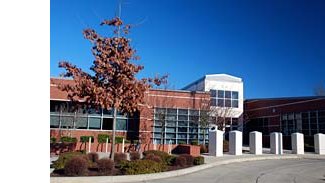-But Flood damage Doesn’t Have To-
SEATTLE—The month of November traditionally signals the beginning of flood season here in the Pacific Northwest. But just as you don’t need to live in a mapped floodplain to need flood insurance, you don’t need to live in a mapped floodplain to benefit from simple and affordable flood damage mitigation measures. According to FEMA Regional Administrator Ken Murphy, it is safer, cheaper and ultimately much easier to limit future destruction than repair it.
“There are a number of low-cost actions that homeowners can take now to better protect or lessen the impact of heavy rain or future flooding,” said Murphy. “Many steps homeowners can take are simple, and can be accomplished in a few hours to a few days."
It is important to check with local building officials about standards and building codes as they vary according to jurisdictions. In addition, some mitigation measures may require hiring a contractor. Here are a few suggestions to keep your home safe when floodwaters come knocking:
Relocate or elevate water heaters, furnaces and major appliances. Elevate water heaters, furnaces and appliances, such as washers and dryers, especially if they are located in a basement. Place them on a pressure-treated wood or masonry base at least 12 inches above the previous high-water mark of a home's projected flood elevation.
Elevate or relocate electrical systems. Electrical panel boxes, circuit breakers, wall switches and wall outlets should be at least 12 inches above your home's projected flood elevation. Some basement or first-floor electrical systems may even be moved to a higher floor.
Interior and exterior floodwalls. To keep water away from indoor furnaces, utilities and appliances, build a watertight masonry wall around them.
Anchor fuel tanks. Indoor and outdoor fuel tanks should be anchored by non-corrosive metal straps or pressure-treated wood to prevent them from turning over or floating away.
Repair leaks and cracks immediately. Leaky roofs and foundation cracks let water into a home more readily. This weakens a structure and provides an ideal habitat for mold. If wet spots appear on the ceiling or cracks appear in a foundation, fix them immediately.
Clean gutters and drains. If gutters and drainage systems are blocked by leaves or debris, water can overflow and quickly flood a home or yard. Check all gutters and drainage systems regularly for leaves and nests. Also double-check storm drains on your street, as leaves and debris can block them, causing water to collect.
Install a backflow valve, check valve, drain plug or standpipe. These measures ensure sewage only flows one way – outside. Consult with a professional to remain code compliant.
FEMA’s How-To Series offers free information and publications for property owners and contractors about construction techniques and measures to reduce flood loss or damages. The series is available at www.FEMA.gov or by calling 1-800-480-2520. These include: Repairing Your Flood Damaged Home, Above the Flood: Elevating Your Floodprone House, Selecting Appropriate Mitigation Measures for Floodprone Structures, Design Guidelines for Flood Damage Reduction, Answers to Questions About Substantially Damaged Buildings and more.
Finances need not be a stumbling block to homeowners who have flood insurance. Policyholders may qualify for Increased Cost of Compliance coverage for substantially damaged properties, which helps pay to bring the home into compliance with local floodplain development requirements. Loans and help with insurance payments may also be available.
For information on the National Flood Insurance Program call 1-800-CALL-FLOOD ext. 304 or visit FEMA's Web site at www.floodsmart.gov. For more information on flood proofing your home, you can order the Homeowner's Guide to Retrofitting, Publication 312, by calling FEMA at 1-800-480-2520.
For more information, call 1-800-427-4661, or visit: www.floodsmart.gov.
Monday, November 8, 2010
Subscribe to:
Post Comments (Atom)







No comments:
Post a Comment